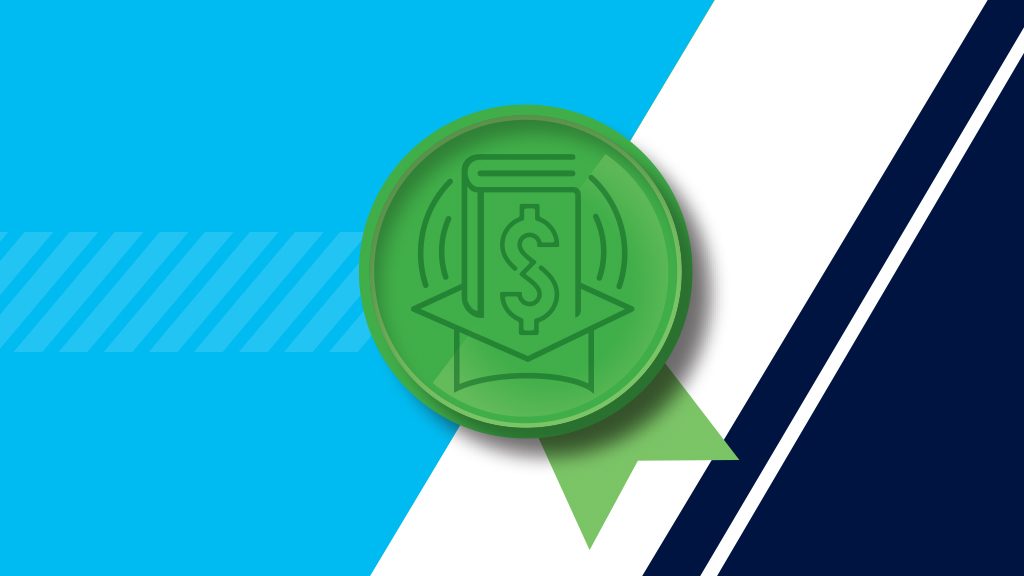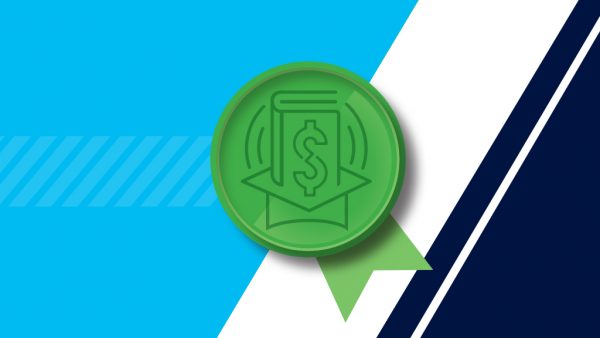You may have heard that student loan debt now exceeds credit card debt in America. Well, it’s true. According to studentloanhero.com, student loan debt exceeds credit card debt by $620 billion. That’s a staggering $1.48 trillion in student loans carried by 44.2 million people.
Is it possible to use student loans to finance your education and avoid becoming part of that statistic?
As with any purchase which requires borrowing, helping to fund your education with student loans can be done responsibly with knowledge, planning and personal commitment.
Knowing What’s Available
Shopping for a student loan that fits your need can be confusing unless you understand what your options are. Although there are many private student loan lenders with a wide variety of products, the best place to start is the with Federal Direct Stafford Loans offered by the Federal Department of Education.
Applying for the federal student loans is easy—you just complete a FAFSA (Free Application for Federal Student Aid). You don’t need a co-signer, and there is no credit check. If you submit a FAFSA that is approved and you are enrolled in school at least half time (6 credits), you will qualify for a federal student loan, either a subsidized loan or an unsubsidized loan or both.
The federal subsidized loan is the best option since it does not accrue interest while you are enrolled in school at least half time. But you have to have need to qualify. The EFC (Expected Family Contribution) number on the FAFSA must be lower than the maximum cost of attendance at the school you are attending.
The federal unsubsidized loan is available to all eligible students who submit a FAFSA. If a student does not qualify for the subsidized loan, the unsubsidized loan will be offered. The interest on this loan begins at the time the money is borrowed.
Federal Parent Loan
If your student loans are not enough to cover your remaining costs, the Parent PLUS Loan is another option. For this federal loan, a parent borrows on behalf of the student. A credit check is required, and there is an origination fee of almost 5%. Use of this loan should be considered carefully since this adds to the parent’s debt. If the parent does not pass the credit check or is denied the Parent PLUS loan for any reason, the student is then eligible to borrow an additional amount from the unsubsidized loan.
Federal Loan Amount Limits
One disadvantage to the federal loans is that the amount that can be borrowed each year is limited and may not cover your remaining costs. But having loan limits also prevents over borrowing.
- First year students may borrow $5,500 for the year, including $3,500 subsidized, if eligible.
- Second year students may borrow $6,500 for the year, including $4,500 subsidized, if eligible.
- Third year students may borrow $7,500 for the year, including $5,500 subsidized, if eligible.
- Fourth year students may borrow $7,500 for the year, including $5,500 subsidized, if eligible.
If you complete your degree in four years and only borrow the subsidized loan amount for each of those four years, you will have borrowed $19,000. If you need to take an extra year to finish, the amount remaining from the subsidized loan would be $4,000 for the year, with a maximum total of $23,000. If you borrow both the subsidized and unsubsidized loan amounts or are only eligible for unsubsidized loans, the maximum amount you are able to borrow is $31,000.
By limiting the amount of loan money a student can borrow, the Federal Department of Education keeps the total within sight of the general guideline of “don’t borrow more than you will make in your first year out of college.”
Private Student Loans
A wide variety of private lenders provide student and parent loan options as well. The terms and interest rates vary from lender to lender so it is important to do some comparison shopping to be sure you have found a loan and interest rate that is best for you. Some lenders offer incentives such as a lower interest rate if you choose a $25 a month payment while you are in school or free access to a study program when you are approved. Private student loans do in most cases, however, require a co-signer for student borrowers.
Creating a Borrowing Plan
Knowing what loans are available is only half the battle. In order to borrow responsibly, you must have a borrowing plan. Once you have received your financial aid award letter listing all available grants and scholarships, you will know what balance will remain that you must pay from other resources. If your summer wages, work earnings and help from parents isn’t enough, it’s time to consider using a loan. You may consider a student loan as a last resort, but it is important to consider it a viable option.
By requesting student loans prior to the start of a semester, your remaining balance can be reduced to a more manageable amount which can then be covered by wages and assistance from home. Many students choose to use their federal subsidized loans immediately, requesting their unsubsidized loans only if absolutely necessary. Students who wish to use student loan money to cover their entire remaining balance should use the federal student loans first and supplement with a private loan unless the interest rate on the private loan is lower than the current federal rate.
Committing Personally to Managing Debt
Requesting student loans is easy. Forgetting about them is also easy. Since they are deferred loans and no immediate payments must be made, it is very easy to forget that you have debt. Determining to pay as little as $10 per month on your student loans while you are in school can help prevent interest on an unsubsidized loan from accruing. Making a $25 voluntary payment can cover the interest and begin whittling away at the principle during your first year. Setting aside a portion of summer wages to put on loan debt can save future interest on a subsidized loan.
As when purchasing a house or a car, using loans to fund an education should be done carefully. Borrowing should be a last choice. But with knowledge, planning and personal commitment, it can be done successfully.








